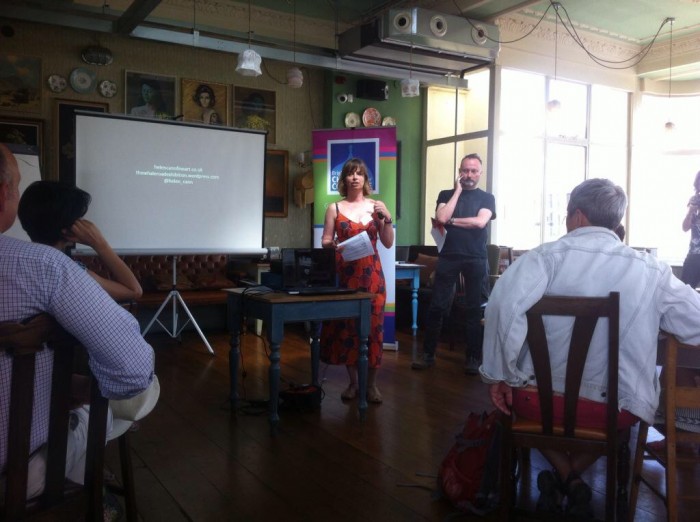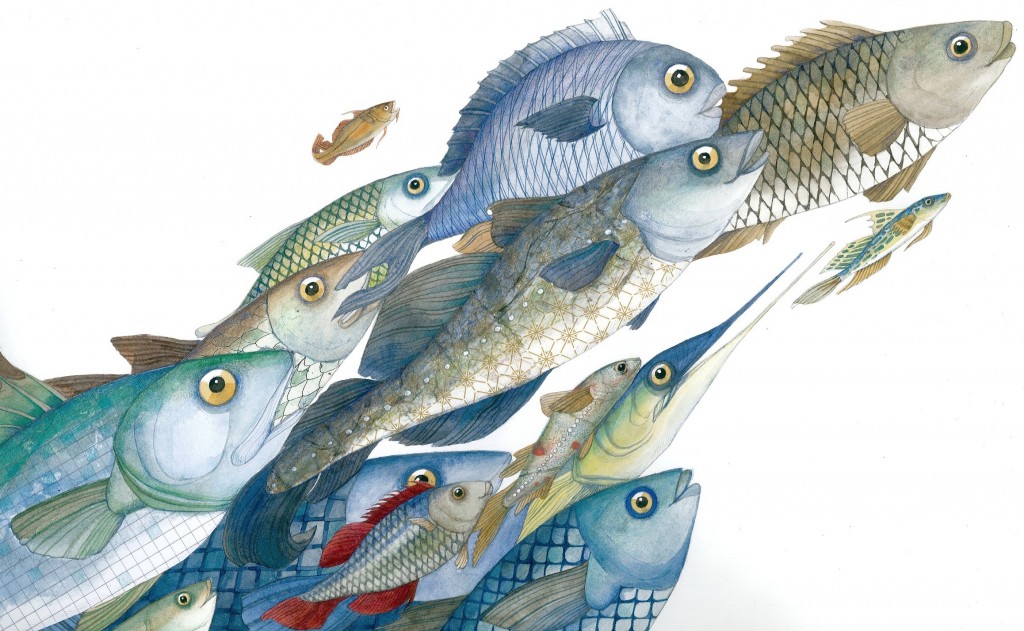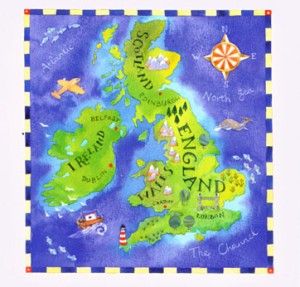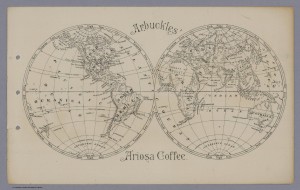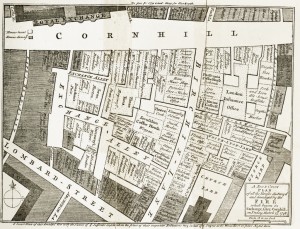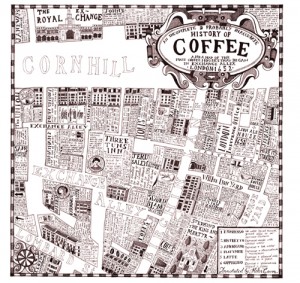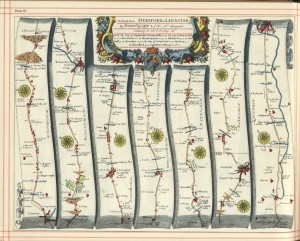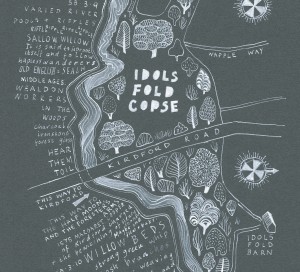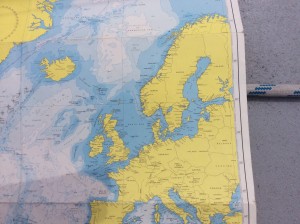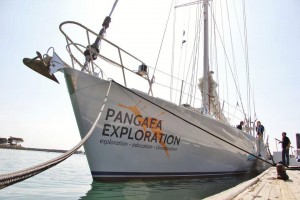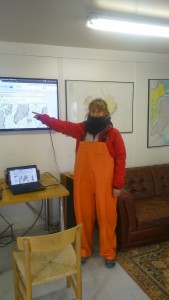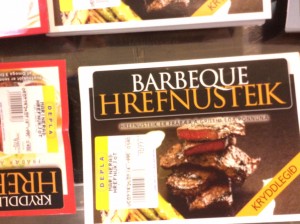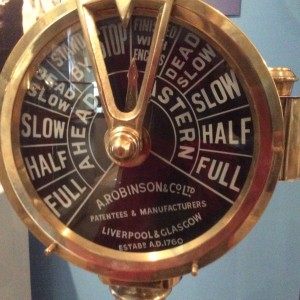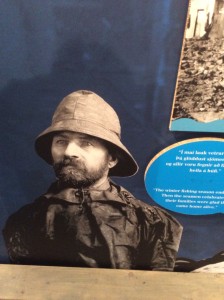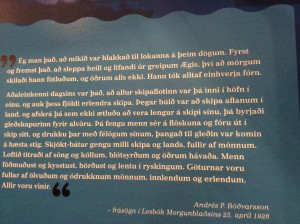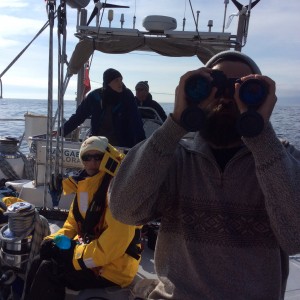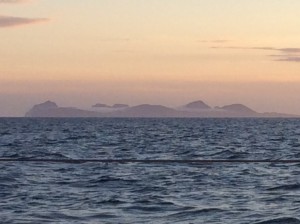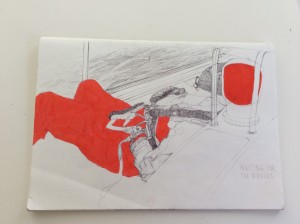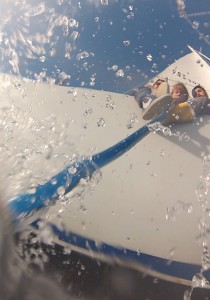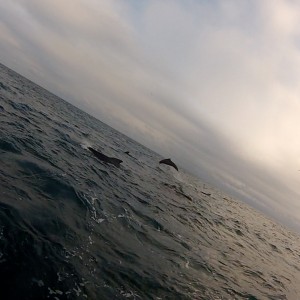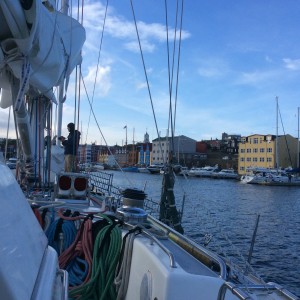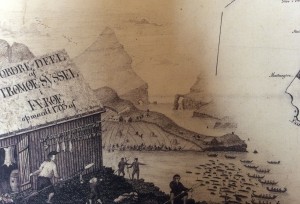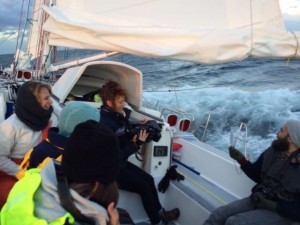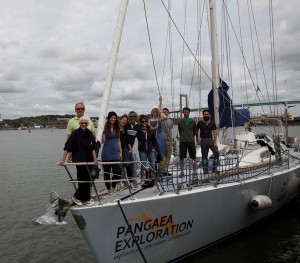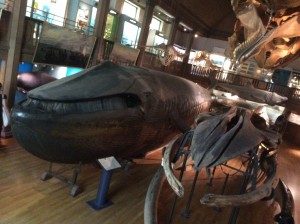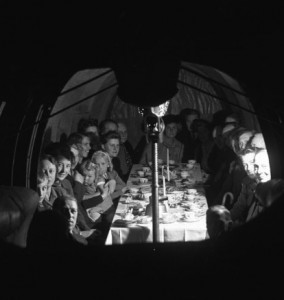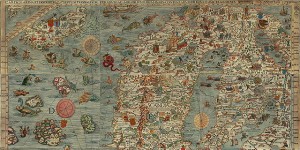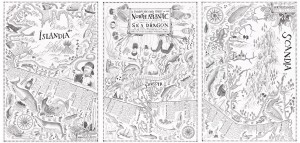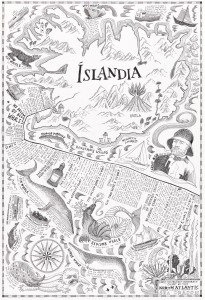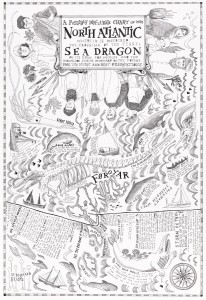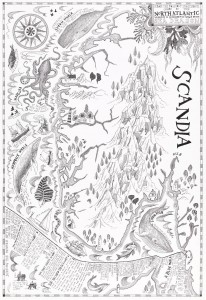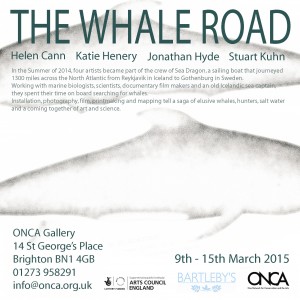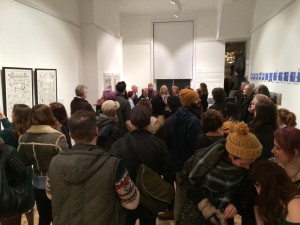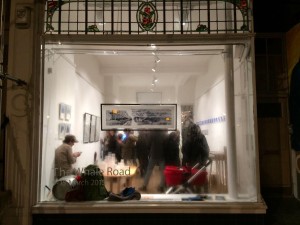At the beginning of July, I was asked by Brighton and Hove Chamber of Commerce to speak about my work and how I find inspiration to members of the Creative Hub – a community of creative businesses in the city.
The following is a a written version of the presentation.
INTRODUCTION
I am an illustrator of children’s books with over 10 years experience. I’ve won several awards and been published in over 30 books. And I am also an artist mapmaker. A fine artist who makes maps…
I would like to tell you a traveller’s tale of how I got from Brighton and back again via a 1300 mile journey across the North Atlantic in a sailing boat searching for whales and inspiration.
BACKGROUND
My children’s illustration work is watercolour and collage and usually for high quality gift books.
My introduction to maps came through several children’s book projects which involved creating illustrated maps. I’ve illustrated maps from Biblical lands, to the Silk Road across the deserts of China to Inuit Greenland, always involving loads of research which I love. I’m interested too in the format of maps; something that signifies you are looking at a map– a cartouche, usually a compass, a scale, a title…
This kind of work made me look more closely at why maps are made and by whom. Sometimes they are made for political reasons – to show boundaries or ownership, sometimes they are made purely for information purposes – geology or geography for example. Always the information shown has been edited or curated by the cartographer. It’s there for a reason; extraneous information is kept out. Every map is covered in little stories – even the place names tell stories of the people who lived there before or something about the location.
UNDERSTANDING THAT STORIES MAKE MAPS.
I became curious about how people understand their location and realised that often we describe where we are by relating stories to each other about the place. If we walk around a city (Brighton in my case) with a visiting friend for example, we’ll describe it using small stories – this corner is where there’s a man who sells bird whistles, or there’s a man who rides a unicycle along this part of the seafront on a regular basis. One of the first maps I did, originally just for fun, is of Brighton. I annotated it with small stories – local history layered with stories from my own personal history… Walking around your parish can be an adventure in itself and you don’t have to travel far for inspiration.
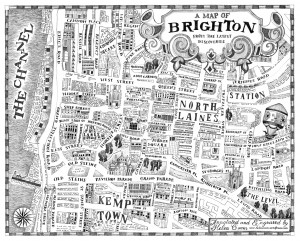
INSPIRATION COMES FROM CURIOSITY
I find inspiration often comes from being curious about something, researching it and then using it as a source to create something new. For example, the map below shows the devastation of a fire in the city of London in 1748. What interested me about it was the huge number of coffee houses (19).
Which led me to create my own map of the history of coffee and London coffee houses. I researched each coffee house and added all the stories I could find to the map.
The close up shows the dense text with stories ranging from the belief that coffee could cure the plague, to women demonstrating that their men spent too long drinking coffee and not enough time at home.
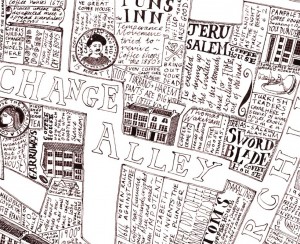
Making the map brought me into conversation with coffee historians, coffee tour guides, expert baristas and food and drink writers…
INSPIRATION CAN COME FROM UNLIKELY SOURCES
Another English map format is the strip map – used by the early mail coaches on the first postal routes. Each map shows the major landmarks along the route and the compass rose changes subtly so you would need to move the map physically making sure it always pointed North.
This format informed the mapping in ‘Echolocation’ – commissioned by ONCA gallery, Brighton: centre for arts and ecology. It shows the flightpath of a very rare bat along the River Kird in Sussex. Sussex Wildlife Trust gave me their collection of scientific data of the study of a single bat and it’s daily journey. I used this to help annotate the map. Tables of fairly dry statistics and botanical Latin triggered visual ideas.
The close up of the map shows how I used the scientific data – the flora, fauna and geography of the journey alongside stories of local history that I found– a witch was hanged for murder in Kirdford Village, there were lime kilns here, there are 30 words for mud in the Sussex dialect…
THE BACKGROUND TO THE WHALE ROAD EXPEDITION
Last summer I made a sailing trip across the North Atlantic with Pangaea Exploration, a group who set up expeditions researching and assisting marine conservation. The trip was from Reykjavik in Iceland to Torshavn in the Faeroes to Gothenburg in Sweden and we were helping marine biologists map whale sightings on to an international database.
Three other artists and I helped to crew Seadragon, a 22 metre steel sailing boat and planned to make work in response to the trip and to the whales, to be shown at ONCA.
MY PLANS FOR THE TRIP…
My original plan was to map the journey and notate it with information about how people view and have viewed whales historically in Scandinavia. I wanted to collect as much information about that as possible. The information could be anything – science, history, personal anecdote, legends, songs etc.
I also wanted to learn to navigate by the stars and to see a blue whale…
IN DIFFICULT CIRCUMSTANCES IT ‘S IMPORTANT TO BE ADAPTABLE AND OPEN MINDED IF YOU ARE LOOKING FOR INSPIRATION.
On arrival in Iceland we actually hit the end of Hurricane Bertha and were stuck in Reykjavik for the first few days. I had expected to be on board the sailing boat fairly quickly getting inspiration from life on deck and whale sightings… This wasn’t possible so I so was forced to look for inspiration in alternative places.
I’d like to say that inspiration can come from anywhere and I ended up documenting anything and everything I could find.
When the winds died down, we eventually set sail.
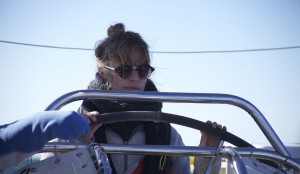
Steering Seadragon – a look of pure terror….
We spent a long time looking for whales. Days and days without any sightings. Definitely no holy grail of the blue whale… In these circumstances, an ability to adapt is useful. As artists, there was much discussion about what work we could produce if we didn’t see any whales. The inspiration we had expected to find wasn’t actually there so we would have to adapt our thinking.
Additionally we were sailing at the height of the Arctic Summer so there was very little darkness. There was definitely no navigating by the stars and the physical toll of on/off 6 hour watches thoughout the night made thinking creatively fairly difficult.
BE PLAYFUL TO FIND INSPIRATION
There were no whales to sketch but I experimented drawing people instead and it was calm enough to do this.
It was also a good chance to play. I think playing creatively is very useful for inspiration regardless of what the outcome is.
I’d like to think that the metal tube experiment actually worked. We had our one and only sighting of whales on the trip shortly afterwards.
A pod of 30 pilot whales jumped and played with the boat for about an hour. Big males and mother and babies. You could actually hear them singing.
INSPIRATION DOESN’T HAVE TO BE VISUAL
Torshavn is the the capital of the Faeroes and it was here that I realised that inspiration doesn’t have to be visual. In my case, it is very often audio – to do with personal interaction and conversation.
The Faeroes are the home of the Grindadrap – a very bloody hunt of pilot whales. It involves the whales being herded into a low shore where people wade into the water and slaughter the whales by knife. The meat is then shared out amongst the hunters and their families. The Faeroese see this as part of their cultural heritage and are passionate to be allowed the right to do this despite a vociferous international reaction against it. Their argument is that pilot whales are not endangered, only a small percentage are killed each year, the slaughter is humane and the meat is all used up.
The Natural History museum had an amazing display of whales and whaling history in the Faeroes.
I got talking to a museum volunteer about it and it turned out he was a trained hunter –had been to ‘whale hunting school’ and was very open about giving me information about the hunt.
Personally I don’t like the idea of killing whales but realise there may be an element of sentimentality in me. Having this sometimes uncomfortable conversation allowed me to think a little outside the box, which is useful if you want to develop new thoughts…
ALLOW INSPIRATION TO DEVELOP
I realised that conversations and listening to stories were what was interesting me – almost more than seeing the actual whales themselves. Many of the crew on the boat had had fascinating lives and lots of hours were spent listening to them talk. There was an old Icelandic sailor who had encountered the original perfect storm in the Atlantic with 50 metre waves, a first mate who had learnt to sail with Polynesian tribesmen, a cook who was a documentary filmmaker specialising in free diving with whales and a Mexican sea captain who swore he had seen a ghost ship.
We arrived finally in Gothenburg after weathering several storms and some projectile vomiting.
And finally, on dry land, I had my only encounter with a blue whale. Gothenburg Natural History museum has a stuffed beached whale from the 19th century which had had its jaws articulated so visitors could walk inside. Apparently it was lined with blue silk and cocktail and tea parties were held there.
It was finally closed to the public when a semi-naked courting couple were discovered inside!
BACK ON LAND THE JOURNEY CONTINUED…
So that was the end of the sea voyage part of the journey. I didn’t get to navigate by the stars but I had seen a blue whale. Kind of.
However, there was still a distance to travel and I hadn’t quite reached my final destination.
I continued to do research, mainly historical, and stumbled upon the Carta Marina, a fantastic 16th century map of the North Atlantic, covered in sea monsters and incredible creatures. The cartographer who made this map believed that these creatures existed, that they were fact, despite never having seen any. It made me realise that we had spent most of our journey listening to tales of whales from the crew but hardly seeing any ourselves and that our whales were almost as fantastic as the Carta Marina sea monsters.
IT WAS IMPORTANT TO UNDERSTAND WHAT TRULY INSPIRED ME RATHER THAN WHAT I EXPECTED TO INSPIRE ME.
So my final piece of work were three maps entitled ‘We Dream of Blue Whales’. Instead of my original thoughts about man’s relationship to whales, I concentrated on the idea of traveller’s tales and noting the map with stories I had heard along the route. I realised that traveller’s tales had barely changed in centuries and there were still stories being told of pirates, ghost ships, smuggling, of drownings and searching for elusive sea monsters.
It was important for me to realise my true inspiration, rather than stubbornly fixing on what I had assumed would be my inspiration.
THE WHALE ROAD
The maps were shown with the work of the three other artists at ONCA gallery at the exhibition – The Whale Road – in March of this year.
CONCLUSION
Some might say that this is a story that started with whale-steak ready-meals in a supermarket in Reykjavik and ended in the guts of a blue whale in Gothenburg. Or it’s a story about tracking some very elusive whales in the North Atlantic. But I definitely think the most interesting story for me personally, was seeing how my creativity was tested, through circumstance and environment and how – by being adaptable, open minded and playful, I could still find inspiration in places I hadn’t expected. In the end, the searching for the whales almost became a metaphor for the search for inspiration itself…

